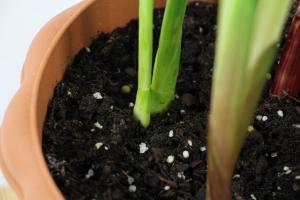How Do I Store My Water Plants in the Winter?
Water plants are a beautiful and important addition to any garden or water feature. However, if you live in a region with cold winters, it's essential to know how to properly store your water plants during the winter months. Here are some tips to ensure your plants survive the winter and thrive come springtime.
Determine Which Plants Need Winter Storage
The first step in storing your water plants for the winter is determining which ones need to be stored. Some water plants, such as hardy water lilies and water hyacinths, can survive cold temperatures and don't need to be stored. However, more delicate plants like tropical water lilies and lotus plants need to be winterized to ensure their survival.
Prepare Your Plants for Storage
Before storing your delicate water plants, it's important to prepare them properly. Begin by removing any dead or dying leaves and trimming the foliage back to about 2 inches above the crown of the plant. Gently lift the plant out of the water and shake off any excess water, then place it in a suitable container.
Clean and Dry Your Container
The container you use to store your water plants should be clean and dry. Rinse it out thoroughly with water and use a mild bleach solution to disinfect the container. Allow it to dry completely before adding any plants.
Fill the Container with Water
Fill the container with water to a level that will cover the top of the plant's crown. Tropical water lilies and lotus plants should be stored in several inches up to a foot of water. If you have a heated greenhouse or indoor pond, you can store your water plants in it to keep them at a consistent temperature throughout the winter.
Store the Container in a Cool Place
Store the container in a cool place that will remain consistently above freezing but not too warm. A garage or basement are ideal places to store water plants during the winter. A location that stays between 40-55°F (4-13°C) is preferable. If necessary, you can use a heater or heating pad to keep the environment at the appropriate temperature.
Check on Your Plants Regularly
During the winter, check on your water plants regularly. Ensure that the water level is sufficient, and that the container remains free of debris and the water is clean. If necessary, add a small amount of aquatic plant fertilizer to the water to keep your plants healthy and thriving during the winter months.
Conclusion
Storing water plants in the winter is an essential aspect of maintaining a healthy and vibrant aquatic garden. By following these tips, you can ensure that your plants survive the winter and thrive come springtime. Remember, the key to successfully overwintering your water plants is to provide them with a cool and consistent environment, keep the water clean and aerated, and check on them regularly to ensure their well-being.

 how many times do yo...
how many times do yo... how many planted tre...
how many planted tre... how many pine trees ...
how many pine trees ... how many pecan trees...
how many pecan trees... how many plants comp...
how many plants comp... how many plants can ...
how many plants can ... how many plants and ...
how many plants and ... how many pepper plan...
how many pepper plan...
































